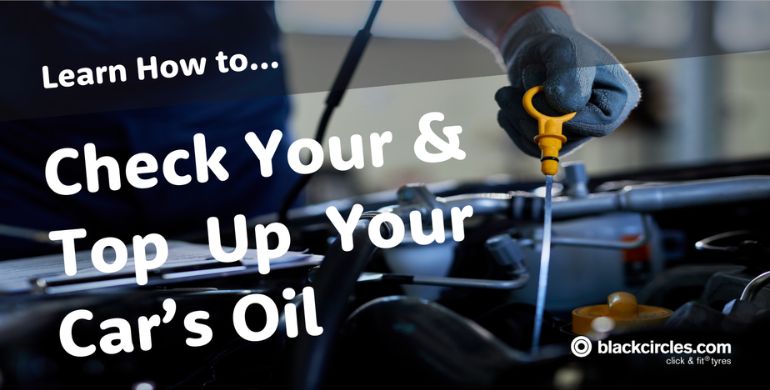Join the conversation
We love to hear from our customers. Connect with us today and let’s start a conversation.
...searching

The thought of checking and/or topping up your oil might seem like a hassle or something only mechanics at your local garage should do, but it's actually a quick and simple task that anyone can handle.
Keeping an eye on your engine oil is one of the easiest yet most important ways to keep your car running smoothly.
Neglecting it can lead to engine damage, reduced performance, and costly repairs.
If you're not sure how to do it, this step-by-step guide will show you the right way to check and top up your engine oil.
Before doing anything, make sure your car is parked on flat, level ground.
If your vehicle is on an incline, the oil reading will be inaccurate, giving you a false sense of how much oil is actually in the engine.
Once parked, turn off the engine and let it sit for at least 5–10 minutes.
This allows the oil to settle in the sump, giving you a more precise reading when checking the dipstick.
If you check too soon, the oil may still be circulating and could lead to an incorrect measurement.
Pop open the bonnet and secure it safely then locate the dipstick—this is usually marked with a brightly coloured handle, making it easier to spot.
If you're unsure where to find it, check your car’s manual, as placement can vary between models.
Once you've found the dipstick, pull it out all the way and wipe it clean with a kitchen towel or rag.
This step is essential, as any old oil residue on the stick can make it difficult to get an accurate reading. You want a clear dipstick so you can properly measure the current oil level.

Now that the dipstick is clean, put it fully back into its tube, making sure it goes all the way down. Then, pull it out again and examine the oil level.
Look at where the oil sits between the minimum and maximum markers on the dipstick:
Oil level between the markers? This means that you're good to go.
If the oil level below halfway, consider adding a small amount to prevent it from running too low.
If the oil level is at or below the minimum, it needs topping up immediately, as running your car with low oil can cause serious damage to the engine.
Additionally, take a moment to observe the oil’s colour and consistency.
Healthy engine oil should be golden-brown and smooth – if it looks black and gritty, it may be time for an oil change rather than just a top-up.
If your oil level is too low, follow these steps to top it up safely:
Once you’re satisfied, secure the oil cap back on tightly.
Taking a few extra minutes to complete these final checks can prevent engine issues and ensure you're ready for a smooth, worry-free drive:
Checking your engine oil at least once a month is a good habit, especially before long journeys.
Some cars have electronic oil level sensors that display warnings on the dashboard, but it’s always good practice to check manually.

If your oil level keeps dropping quickly, this could indicate a leak or an issue with your engine, so it’s worth getting it checked by a mechanic.
Oil is essential for keeping your engine lubricated and preventing excessive wear. If you drive with too little oil, you risk:
If your oil pressure warning light comes on while driving, pull over immediately and check the oil level. Ignoring this warning can lead to serious engine failure.

Checking and topping up your engine oil is a simple but crucial task that helps keep your car running efficiently.
Taking just a few minutes to check your oil each month can prevent engine damage and save you from costly repairs.
Now that you know how to do it properly, you can drive with confidence, knowing your car is in good shape.

We love to hear from our customers. Connect with us today and let’s start a conversation.